Are you ready to transition to remote work today?
With the Coronavirus spreading rapidly, many companies are making the tough, but necessary decision to have their team move to working remotely. The risk is too great with the ease with which this virus is spreading between people.
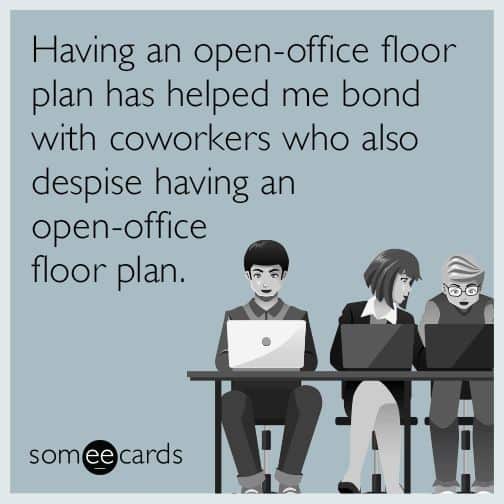
Death to the open office.
There's been a lot of research that shows open offices do not have the desired effects executives hope they do. They actually tend to make people communicate less, and are hated by many staff who have difficulty focusing.
And most importantly for our present world crisis: they spread disease much greater than other office designs. The National Research Centre for the Working Environment found that:
"Occupants in open-plan offices (>6 persons) had 62% more days of sickness absence."
Remodeling your building to suddenly not be row upon row of open office desks, and disinfecting everything constantly isn't really feasible, which is why so many companies including Square, Google, Stripe, Twitter, and Coinbase are closing their offices temporarily.
Founders & business leaders: We sent this note to Sequoia founders/CEOs to provide guidance on how to ensure the health of their business while dealing with the consequences of the coronavirus. We hope it's helpful to you during these turbulent times. https://t.co/SRuqVGT8vD
— Sequoia Capital (@sequoia) March 5, 2020
The show must go on.
Just because offices are closing does not change business as usual. Work still has to get done, products have to get shipped, and sales deals closed.
As a manager, this puts a new, major pressure on you: Whether you wanted to or not, and whether you're familiar with how to do it or not, you suddenly have to keep your team productive as they transition to remote work.
That's why today we're here to give you 3 absolutely essential tips that will help you avoid major pitfalls that can cripple your team's productivity, and be much harder to fix than if you get out in front of them *right now*.
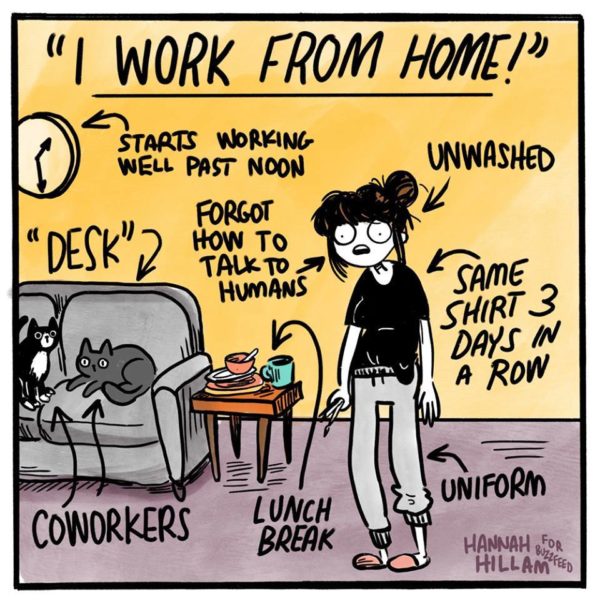
How to Help Your Team Successfully Transition to Remote Work
Even as some debate how lethal the virus is and evaluate the various strains, it does not change that fact that there's a lot we don't know about this rapidly spreading virus.
For this reason, many are taking strong precautions, including Italian soccer leagues playing games in empty stadiums, the NBA recommending a reduction in fan interactions like autographs and high fives, and a laundry list of major conferences canceling including SXSW.
Table of Contents:
- Encourage your team to keep their current morning routine
- Get the workspace right
- Fight loneliness by encouraging connection

So while you think about which song you'll sing to yourself while you wash your hands next time, and try not to touch your face, mouth, or eyes, start planning to put these tips in action. It's important you help your team continue performing well despite them not coming into the office for awhile.

https://theoatmeal.com/comics/working_home
New structure, new habits, new routines.
If your team is used to all being in an office it can feel VERY different working from home. Some of the simplest things become much more difficult:
- You can't turn to a colleague for a quick chat.
- You don't have the productive environment where all your good work habits and routines take place.
- You're now at home with all your cool, fun stuff, distractions, family, loved ones, etc all around you.
Especially if this is a sudden or unplanned change, it's easy to get started on the wrong foot, and have a hard time making the switch.
Fortunately, you can help your team make a smoother transition by actively talking with them about each of these topics:
To all the folks who are used to going to the office but now have to WFH for the next 3 weeks, welcome. I’ve been wfh for the last 3 years & my one advice is:
— C:hristina (@divinetechygirl) March 5, 2020
Get up. Shower. Get out of PJs and do not work fr the bed. If you have a desk, great. If not, go to the kitchen table.
1) Encourage your team to keep their current morning routine
When you don't have a commute and your usual work routine, it can be easy to sleep in, start late, or have a harder time getting going each day.
The Lighthouse team is fully remote, and many on our team have been working remotely for many years. I asked them for their advice and this was one of the most common issues they all had to work to overcome.
The act of getting ready and hopping in your car, on the subway, or riding your bike to work all help get the day going. They trigger all kinds of habit routines in your brain telling you, "it's time to work."
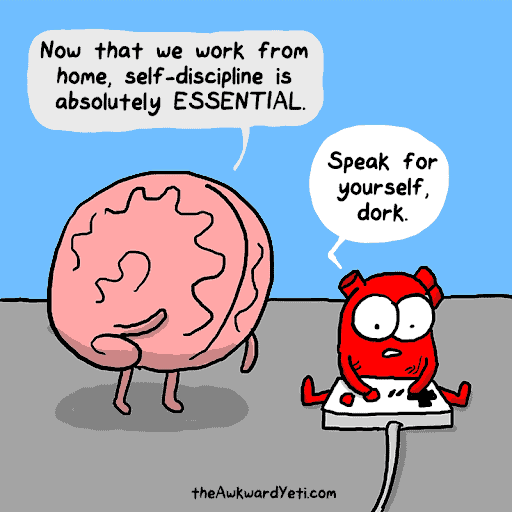
Without the commute you need to keep what routines you can and still get your mind and body ready for work.
While your team won't be commuting, encourage them to get up at the same time, shower, dress like they're coming into the office, and settle in for work when they're ready.
By keeping their existing routine, minus their commute, it helps make sure they don't slip into the bad habits of some remote workers who don't work a full day, never put on pants, etc.

Savor the saved time.
Best of all, if they had a long commute, they can now put that time into something different. As their manager, you can encourage them to use it in a way that's a win-win for morale and the company:
- Spend an extra 30 minutes with their kids
- Read a book or other publication they've been meaning to catch up on
- Call up a friend or coworker they enjoy catching up with
- Take a walk or get some exercise in a little more often than usual
Or, if they want to start the day early, they could take a longer lunch, or end a little earlier in the day.

The key is the routine.
Habits are easy to set, but all it takes is a few days for them to erode or break. When those habits are gone, it's easy for you to then end up in a rut.
Whether you're a fan of James Clear's Atomic Habits, or the Tiny Habits approach of BJ Fogg, you'll find they both share a similar philosophy: The first step in a habit is the trigger.
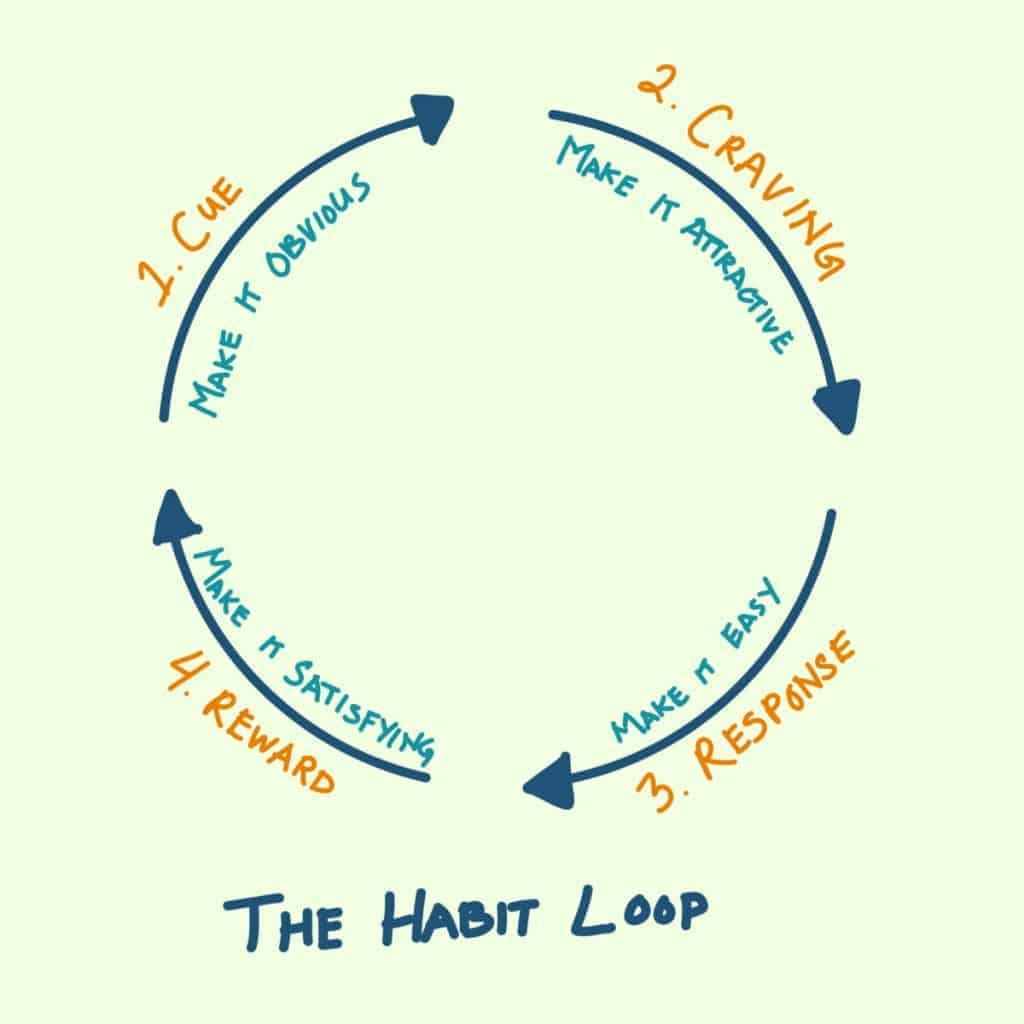
The sudden transition to remote work, especially when you're working from home, means that you lose out twice on habit triggers:
- Lost Good Triggers: You miss out on many of the triggers you get in the office to focus, collaborate, and get things done.
- New Tempting Triggers: You are now surrounded by all kinds of triggers and distractions you normally have at home that have nothing to do with getting work done.
As a leader, the best thing you can do is keep as many of the positive, work triggers as possible for your team:
- Turn your daily standup into a daily call.
- Keep as many of your routine meetings as possible and shift them to video calls.
- Start the day at the same time as you did before, being visible in your work based on when you send emails, how you participate in chat, and what feedback you give in your various tools and apps.
The more of their routine that can stay the same, the more likely they are to continue to be productive.
Also, by switching to things like video calls, you create accountability for people that they need to get out of bed, shower, and be presentable...just like they would coming into the office.

2) Get the workspace right
Sitting on your couch is not going to be productive. Nor is sitting in your kitchen if you have kids buzzing around.
Lorcan Roche Kelly has some great tweets in his tweetstorm emphasizing this:
or this pic.twitter.com/wxdzZDnSVt
— Lorcan Roche Kelly (@LorcanRK) February 18, 2020
Here's my "office"
— Lorcan Roche Kelly (@LorcanRK) February 18, 2020
It is worth spending money on a comfortable chair 🙂 pic.twitter.com/jW5doUjBpT
Look at those pictures and think about the stark contrast. One looks like a command center in a spy movie, while the other 3 are more like what you'd do when you hang out at home.
Which is going to be most productive?
Your home office is what you make it.
Encourage your staff to carve out a dedicated work area. This is essential, no matter how small their home may be.
If they have roommates, spouse or kids, tell them to find a way to keep themselves separate. This will help them focus much better, and set boundaries for anyone that may interrupt them.
Remote work starts out fun, then instantly turns into the hunger games once you and your spouse have conflicting video calls and only one "professional" space.
— Aaron Levie (@levie) March 6, 2020
Equally important is helping them disconnect. By having a special, dedicated area for work, they can truly "step away" even though instead of a commute it may be only literally a few steps.
I learned this one the hard way, as I found that while my couch was comfortable, I couldn't relax anymore on the same couch I was answering support emails and writing blog posts on.
To fix that, I buckled down and set up a dedicated work area. Even though I have a small New York City apartment, I was able to make a spot that allows me to develop a habit of focus when I'm there.

Watch your posture.
Another underrated consideration as people transition to remote work especially at home is comfort.
Whether they make a makeshift standing desk out of some books, or pull up a good chair, it's important they don't wreck their posture because they're hunched over a camping chair or slouched deeply in a couch.
You'd be surprised how painful it can be in just a couple days of poor sitting.
Equally important is getting up to move around. The walk across your building to go to a meeting, grab lunch, or meet a colleague in another area all provide much needed mental breaks and get the blood flowing.
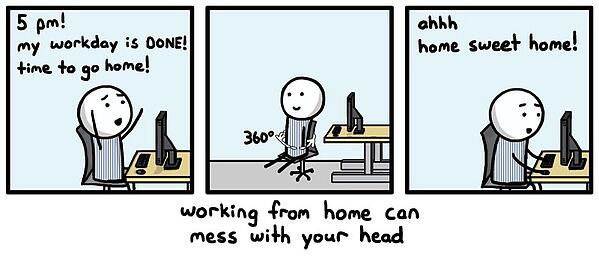
Those same activities either don't exist or are now a few steps only when you work from home.
Work in bursts.
That's why a great way to maximize your abilities working from home is to follow an approach of "burstiness" at work:
We might soon be doing more remote work: remote teams work best when they are "bursty:" switching between solo work & periods where everyone is exchanging info together at the same time (email is bad at this). A 1 SD increase in burstiness increases team performance by 29%! pic.twitter.com/f9pebkvTfJ
— Ethan Mollick (@emollick) February 29, 2020
This means giving your team plenty of time to do a few hours of deep, focused work, and then making sure they come up and interact with others to collaborate, share, and bond.
The balance of the two is harder to get right in a remote environment, because the default now is too much isolated work versus over socializing in the office.
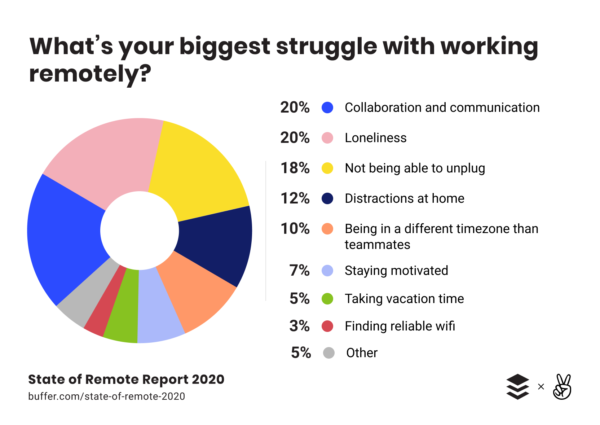
3) Fight loneliness by encouraging connection
One of the most often reported problems for remote workers is loneliness as Buffer's 2020 State of Remote Report shows once again.
Especially if we're in a Coronavirus quarantine, this will be magnified, as you are less likely to go to a co-working space, coffee shop, or other place with lots of other people to interact with.
Each of your employees could experience a different kind of cabin fever/loneliness:
- A single employee who recently moved to the area and has a studio apartment could start to feel both lonely and claustrophobic
- A single employee with kids could be craving connection with other adults after doing nothing but remote work and playing with their kids...who now are also home from closed schools, or even sick.
- A married employee may be looking for colleagues to connect with who share interests that aren't of interest to their spouse.
- Any employee can start to feel tired of being in the same space for too long, and a lack of connection with others can drain anyone, especially your extroverts who thrive at work.

To combat this feeling, encourage your team to take some time to still connect with their fellow team members and friends at work, as well as other tactics like:
- Have peer 1 on 1s with colleagues they'd benefit from talking with, and now can't cross paths in the hallway for a quick catch up or collaboration.
- Create some time in one of your team wide meetings for everyone to share something they want to outside of work tasks (like say their favorite snack they stocked up on during quarantine).
- Add extra time to your 1 on 1s with them so they have more time to connect with you. Make sure you do it with video on, so you can see each other's facial expressions.
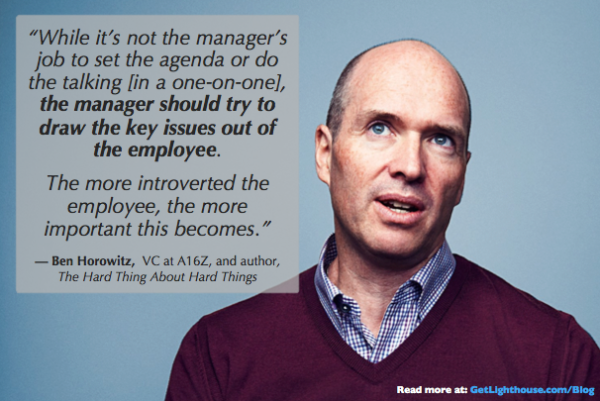
You have to ask!
You need to be proactive about these issues. Your team is not going to magically figure this out all on their own, especially not on Day 1.
If you wait, it will be a lot harder to fix. Once someone is lonely, their back is wrecked from a bad work setup, or your team has lost many of their good habits, it will be a lot harder to address.
With that in mind, we recommend you ask all of these questions in your 1 on 1s next week with everyone on your team to get ahead of these potential pitfalls:
- How is your morning routine going now that you don't have to go into work? If you kept the same routine, how would you like to use the time saved on your commute?
- What is your workspace setup so you can focus and get things done during the day? Do you need anything to help?
- What are you planning to do to stay connected with the rest of the team and other colleagues at work? I'd encourage you to schedule some extra calls to make up for the lost ad hoc communication from the office.
These questions can be the start of a great discussion to make sure they have what they need to succeed. It frames you as supportive while potentially catching problems when they're small.
BONUS: If you're a Lighthouse customer, we have something special for your 1 on 1s:
- Click here and we'll add those 3 questions to all your 1 on 1s for you, so you remember to ask everyone about it.
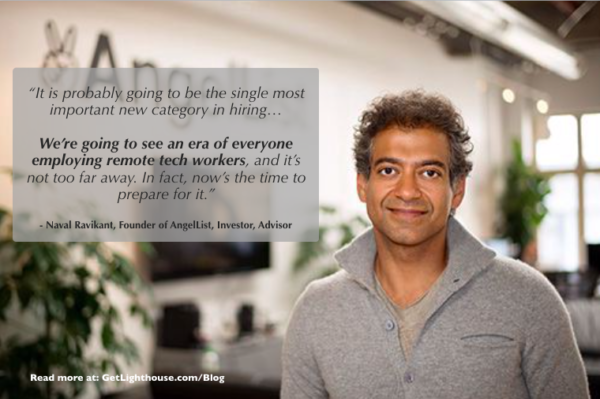
This is just the beginning of your transition to a remote work world...
Even before the Coronavirus forced the issue, many companies were already starting to allow remote work, either with certain staff, as a new recruiting tool, or building their company from the ground up remote.
Even once the virus fades away, the trend will continue. Some of your employees are likely to really like remote work and want to continue it. You may even want to take advantage of remote opportunities, too.
If you're the kind of person that likes to think ahead and be prepared, then get a head start by checking out this collection of great further reading on remote work and management:
- Learn how long time remote CTO Mathias Meyer recommends you think about building a remote team
- Learn how Basecamp communicates with a remote mindset
- Avoid these common mistakes when managing remote workers
- Check out Gitlab's guide to remote work (the entire company is remote) and this talk from their CEO on managing remotely.
- How to effectively manage remote employees
- If you start hiring new employees to work remotely, you need to keep these 12 pitfalls in mind that other leaders failed to plan for.
- Read long time remote work advocate, Andreas Klinger's Crash Course to Managing Remote Teams here.
- Ask these questions in your 1 on 1s with remote employees to support them best.
Are you growing as a leader? Are you building the skills you need?
Whether your team is in office with you or remote, Lighthouse Lessons can teach you the skills you need to better lead, motivate, and grow your team. Let us help you navigate the unique challenges of being a leader like we helped Daniel by learning more and signing up here.





